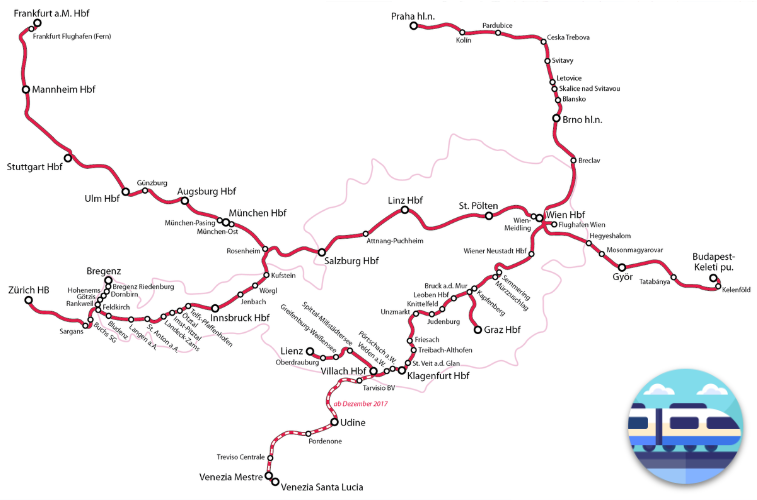Some more information on how to travel to the conference.
Vienna, Austria
Vienna’s central location in Europe makes it a hub with excellent transport links from all over the world. Since VIS 2025 is a Green meeting, we encourage you to select climate-friendly travel by train or bus.
Traveling By Train
Vienna is fully integrated into the European rail network. The city’s principal railway hub, Wien Hauptbahnhof (Central Station), serves as the main interchange for national and international trains, with up to 1,100 train stops per day and seamless connections to other transport options. Popular long-distance destinations such as Munich, Prague, Budapest, Salzburg, and Graz are reachable via frequent direct Railjet, EuroCity, and InterCity trains. For example, Vienna to Munich and Budapest offer hourly departures, while services to Salzburg and Linz can run as often as every 30 minutes. Trains to further destinations like Zurich, Venice, and Milan operate at least once daily. Vienna is the largest night train hub in the EU, providing multiple overnight options from other European capitals. More information on the train network can be found on the ÖBB rail network website.

Traveling By Bus/Car
The international Eurolines long-distance bus routes connect all of Europe to Vienna. The long-distance bus company Flixbus offers bus routes throughout Europe. You will also have a safe journey to Vienna by car on Austria’s excellent network of motorways, expressways and federal highways. As tolls are compulsory on all motorways and expressways in Austria, you will also need a vignette to use Vienna’s city motorways. Parking fees in the short-stay parking zone apply to almost the entire Vienna metropolitan area.

Traveling By Plane
The Vienna International Airport is Austria’s largest international airport and very well connected to many international destinations. Vienna Airport serves about 170 destinations in 66 countries through around 60 airlines. The majority of European capitals are two to three hours away by plane. Because flying is among the most carbon-intensive activities an individual can undertake, it is highly recommended to compensate for these emissions through CO2 offsetting.
